In the ever-evolving world of parenting and wellness, the curiosity surrounding the use of breast milk in bathing has sparked intriguing discussions. Known for its packed nutrients and bonding properties, breast milk is often lauded for its potential benefits for newborns and beyond. But as more parents explore this gentle bathing option, a crucial question arises: Should you add soap to a breast milk bath?
In this article, we will delve into best practices for incorporating breast milk into your baby’s bath time routine, examining the benefits, potential concerns, and expert recommendations. Whether you’re a seasoned parent or a new caregiver looking to enhance your baby’s bathing experience, join us as we navigate this delicate topic and uncover the insights that will help you make informed choices for your little one’s skin care.
Understanding the Benefits of Breast Milk Baths for Skin Health
Breast milk baths offer a natural alternative to traditional skincare routines, leveraging the one-of-a-kind properties of breast milk to enhance skin health. Rich in essential nutrients, breast milk contains a host of vitamins and fatty acids that can aid in soothing irritated skin, battling dryness, and improving overall complexion. Many parents find that incorporating breast milk baths into their child’s bathing routine can alleviate conditions such as eczema, rashes, and other skin irritations. The emollient properties of breast milk can help nourish and protect delicate skin, providing a calming experience during bath time.
When it comes to using soap in these baths, it’s crucial to evaluate the potential impacts on the skin’s natural barrier. Some recommend avoiding soap altogether to maximize the beneficial properties of breast milk. Instead, consider the following best practices:
-
- Consistency: Regular baths with breast milk can yield the best results for skin health.
-
- Water Temperature: Use lukewarm water to ensure comfort and preserve the milk’s nutrients.
-
- Short Soaks: Limit bath time to 10-15 minutes to retain moisture.
In cases where soap is deemed necessary, choose gentle, organic options that are free from harsh chemicals. Using a minimal amount of soap allows for effective cleansing without stripping the skin of its natural oils. Additionally, pairing breast milk baths with a top-notch moisturizing routine can ensure that your little one’s skin remains hydrated and healthy.
Essential Considerations for Using Soap in Breast Milk Baths
When considering the addition of soap to a breast milk bath, it is crucial to choose products that are gentle and safe for both baby’s sensitive skin and the nourishing properties of breast milk. **Natural, hypoallergenic soaps** are ideal, as they generally lack harsh chemicals and artificial fragrances. Explore options such as:
-
- **Organic baby soap**: Made from plant-based ingredients.
-
- **Unscented formulations**: To avoid overwhelming the child’s senses.
-
- **Dye-free products**: To reduce exposure to potential allergens.
Moreover, the specific objectives of the bath should guide your soap choice. If the purpose is to clean and soothe, select a product designed for delicate skin, while keeping in mind the following points:
| Consideration | Details |
|---|---|
| Skin Type | Choose a soap that matches the skin sensitivity of your baby. |
| Timing | Use soap sparingly to maintain the benefits of breast milk. |
| Allergies | Perform a patch test if introducing a new product. |
Choosing the Right Soap: Ingredients to Look For and Avoid
When selecting soap for a breast milk bath, it’s essential to prioritize ingredients that nourish and care for sensitive skin. Look for soaps that feature **natural, soothing elements** such as:
-
- Organic oils: Coconut oil, olive oil, or almond oil, which hydrate and soften the skin.
-
- Botanical extracts: Chamomile, calendula, or aloe vera, known for their calming and healing properties.
-
- Natural preservatives: Vitamin E or rosemary extract, which help maintain freshness without harsh chemicals.
Conversely, it’s vital to avoid certain ingredients that could irritate or harm delicate skin. Steer clear of soaps that contain:
-
- Sulfates: Aggressive detergents that strip away natural oils.
-
- Fragrance: Synthetic scents that can cause allergic reactions or irritate sensitive skin.
-
- Parabens: Preservatives linked to potential health risks.
Best Practices for Preparing and Enjoying Breast Milk Baths
Preparing for a breast milk bath is an enchanting experience that requires a blend of care and creativity. Start by gathering your supplies to create a soothing environment for your little one. Use freshly expressed breast milk, ensuring it’s at a comfortable temperature before introducing it to the bath. Avoid additives unless necessary, as the natural properties of breast milk are a gentle way to nourish your baby’s skin. You might consider the following items to enhance the experience:
-
- Clean towels: Have soft, clean towels ready for drying off after the bath.
-
- Gentle lighting: Use soft lighting to create a calming atmosphere.
-
- Toy selection: Incorporate a few sensory toys to keep your baby engaged.
During the bath, engage with your baby through soft music or gentle talking. Incorporate a light splash of the breast milk bath to familiarize them with the feel of the liquid. Remember, the key here is to ensure your baby is comfortable and happy. Here are some tips to keep in mind:
-
- Duration: Keep the bath session short, around 10-15 minutes, to avoid overstimulation.
-
- Post-bath routine: Follow up with gentle skin care afterward to seal in moisture.
-
- Scent-free products: If you decide to use soap, choose natural, unscented varieties to ensure they complement the bath’s soothing qualities.
Q&A
Q&A: Do You Use Soap in Breast Milk Bath? Best Practices
Q1: What is a breast milk bath?
A1: A breast milk bath is a soothing soak that combines warm water with breast milk. This practice is often embraced by parents for its potential skin benefits, particularly for babies with dry or irritated skin. The natural fats and proteins in breast milk can help hydrate and nourish the skin.
Q2: Should I add soap to a breast milk bath?
A2: Generally, it’s best to avoid adding soap to a breast milk bath. The natural composition of breast milk provides its own gentle cleansing properties. Adding soap could disrupt the delicate balance of nutrients in the milk and may irritate sensitive skin. If you’re looking for a cleansing effect, it’s advisable to stick with just breast milk and warm water.
Q4: What are the benefits of a breast milk bath?
A4: Breast milk baths are thought to provide several skin benefits, such as:
-
- Moisturization: The natural fats in breast milk can hydrate and soothe dry skin.
-
- Healing Properties: Breast milk contains antibodies and antibacterial properties, which may help heal minor skin irritations or rashes.
-
- Gentleness: For babies with sensitive skin, a breast milk bath is a gentle alternative to harsh soaps and cleansers.
Q5: Who should avoid breast milk baths?
A5: While breast milk baths are generally safe for most babies, those with milk allergies should avoid them. If your baby has a known allergy to cow’s milk or any other components, consult your pediatrician before trying a breast milk bath.
Q6: How often can I give my baby a breast milk bath?
A6: You can incorporate breast milk baths into your baby’s routine as often as you’d like, but moderation is key. Once a week can be a nice frequency to enjoy the skin benefits without overwhelming the delicate skin barrier. Always observe how your baby’s skin responds and adjust accordingly.
Q7: Are there any alternatives to breast milk baths?
A7: Yes! For those who may not have access to breast milk or prefer different options, consider oatmeal baths, which can also soothe sensitive skin. Just be sure to use finely ground oats and consult with a pediatrician to ensure it’s appropriate for your infant’s skin.
Q8: Conclusion?
A8: Breast milk baths can be a nurturing and beneficial way to care for your baby’s skin, but it’s essential to keep them simple. By avoiding soap and focusing on the pure, natural properties of breast milk, you can create a gentle bathing experience that supports your little one’s skin health. Always prioritize your baby’s comfort and safety, and enjoy the bonding time that bath time can create!
In Retrospect
while the idea of incorporating soap into breast milk baths might seem tempting, it’s essential to weigh its effects on both the skin and the overall experience for your little one. As we’ve explored, breast milk is a naturally nourishing substance brimming with beneficial properties that can soothe and moisturize delicate skin. When considering the addition of soap, prioritize gentle, hypoallergenic options and always perform a patch test to ensure compatibility with your baby’s skin.
Ultimately, the best practice is to listen to your baby’s needs and observe how their skin responds. Whether you choose to stick with pure breast milk baths or experiment with soap, the goal remains the same: to create a nurturing and safe bathing experience. Remember, every little one is unique, and what works for one may not work for another. So, embrace the journey, trust your instincts, and enjoy the precious moments of connection that bath time brings.


